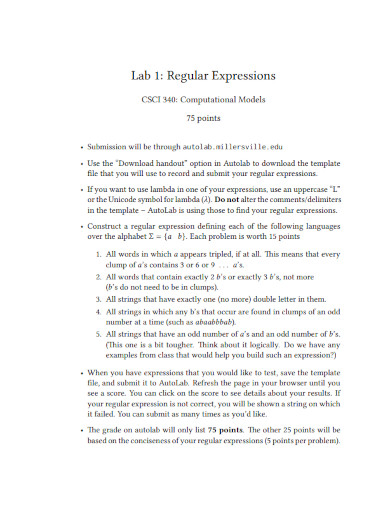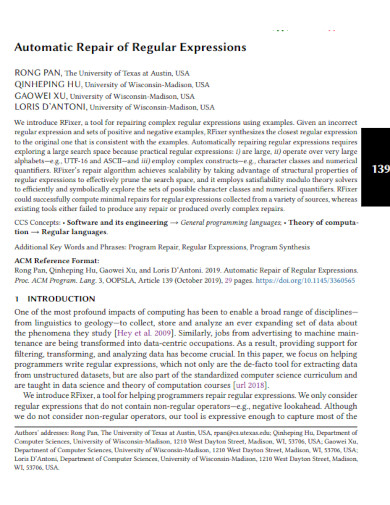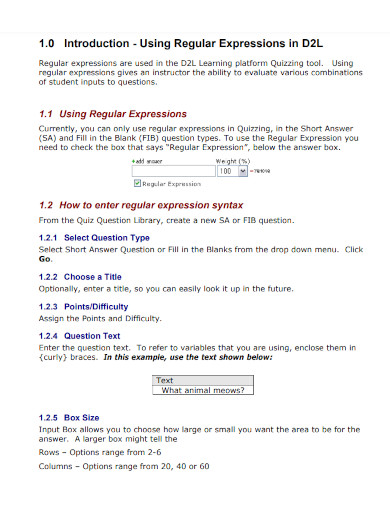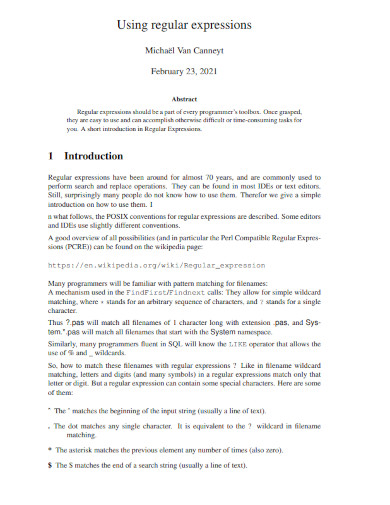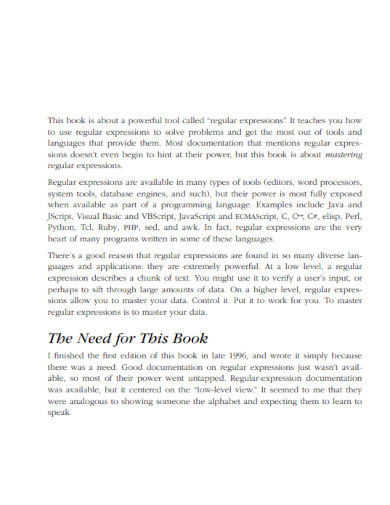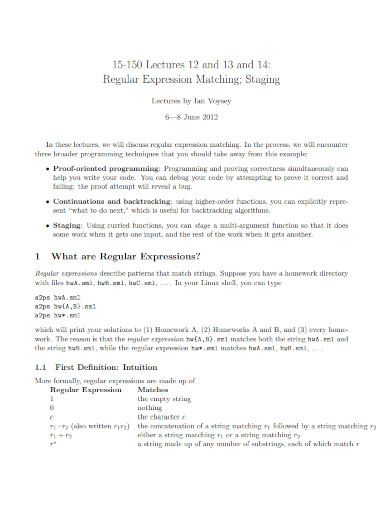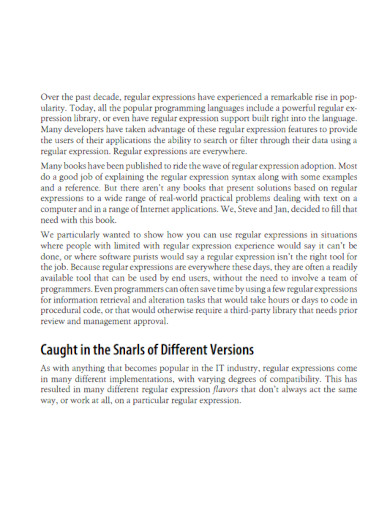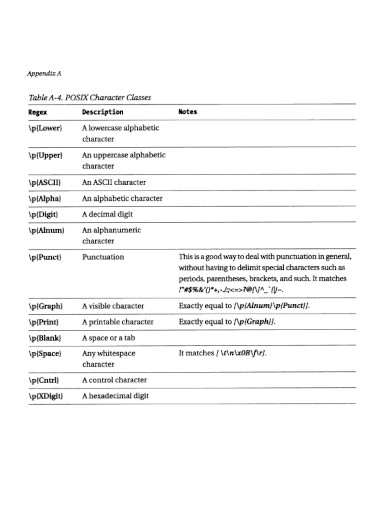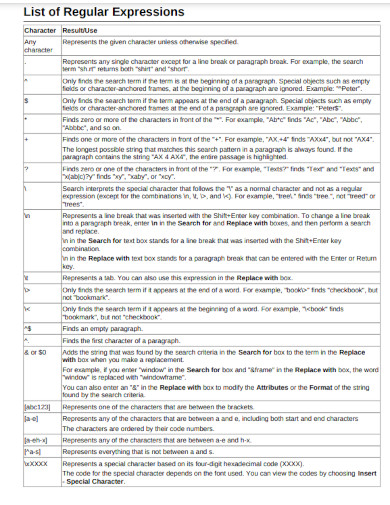10+ Regular Expression Examples
Regular expressions are powerful tools used in computer science and programming to search, match, and manipulate text. A regular expression, also known as regex or regexp, is a sequence of characters that defines a search pattern in a scientific method. These patterns can be used to match specific text strings, extract data to analyze gap, and perform various text processing operations.
1. Regular Expression Template
2. Automatic Repair of Regular Expressions
3. Pattern Matching Using Regular Expressions
4. Using Regular Expressions
5. Using Regular Expressions Example
6. Mastering Regular Expressions
7. Regular Expression Matching
8. Efficient Regular Expression Matching
9. Regular Expressions Cookbook
10. Regular Expression Reference
11. List of Regular Expressions
What is Regular Expression?
Regular expressions are widely used in many programming languages, including Python, Java, JavaScript, and Perl, HTML, among others. They are useful in many applications, including data inventory validation, parsing, and text manipulation. In addition, they are often used in search engines, email clients, and text editors to perform complex search and replace operations.
A regular expression can contain a combination of special characters, literals, and meta-characters that define the search pattern. Special characterization is used to specify specific types of characteristics, such as digits, letter address, text structure, or whitespace. The literals are used to match specific characters or sequences of characters in the text. The meta-characters are used to specify repetition, alternation, or grouping of characters in the search pattern.
How to use Regular Expression
One of the most common uses of regular expressions is for data validation. For example, an email validation regular expression can be used to check whether an email address is valid or not. Similarly, a phone number validation regular expression can be used to check whether a phone number is valid or not. Follow these simple steps to use Regular Expressions:
Step 1: Determine the pattern you want to search for or match in your text.
Regular expressions allow you to search for a wide range of patterns, including specific characters, words, phrases, or more complex patterns.
Step 2: Choose the appropriate regular expression syntax
Choose the regular expression syntax or pattern-matching language for your programming language or tool. Python, Java, JavaScript, and Perl support regular expressions. Language syntax and regular expression functionality vary.
Step 3: Create your regular expression pattern
Your programming language’s syntax and functionalities create your regular expression pattern. The search pattern you wish to match is defined by a regular expression pattern, which is a string of characters. Every lowercase letter sequence may be matched by the regular expression pattern “[a-z]+.”
Step 4: Compile and test your regular expression pattern
Compile and test your regular expression pattern using a regular expression tester or a testing function provided by your programming language. A regular expression tester allows you to test your pattern on the sample text and see if it matches the desired pattern.
Step 5: Apply your regular expression pattern to your text data to search, match, or manipulate it.
Regular expressions can be used to perform a wide range of operations, including search and replace, text extraction, and data validation.
Step 6: Refine your regular expression pattern as needed.
Regular expressions can be complex, and it may take some trial and error to get the desired results. Make sure to test your pattern on different types of text data to ensure it works as intended.
FAQs
What are some common uses of regular expressions?
Regular expressions are used in many applications, including data validation, parsing, and text manipulation. They are also used in search engines, email clients, and text editors to perform complex search and replace operations.
What are some common regular expression syntaxes?
Regular expression syntax varies depending on the programming language or tool you are using. Some common regular expression syntaxes include Perl-Compatible Regular Expressions (PCRE), POSIX Regular Expressions, and JavaScript Regular Expressions.
How can I refine my regular expression pattern?
Regular expressions can be complex, and it may take some trial and error to get the desired results. Make sure to test your pattern on different types of text data to ensure it works as intended. You can also consult regular expression documentation or seek help from online communities or forums.
Overall, using regular expressions requires a solid understanding of the syntax and functions of your chosen programming language, as well as the ability to create and test regular expression patterns. With practice and experience, you can become proficient in using regular expressions to process and manipulate text data.



